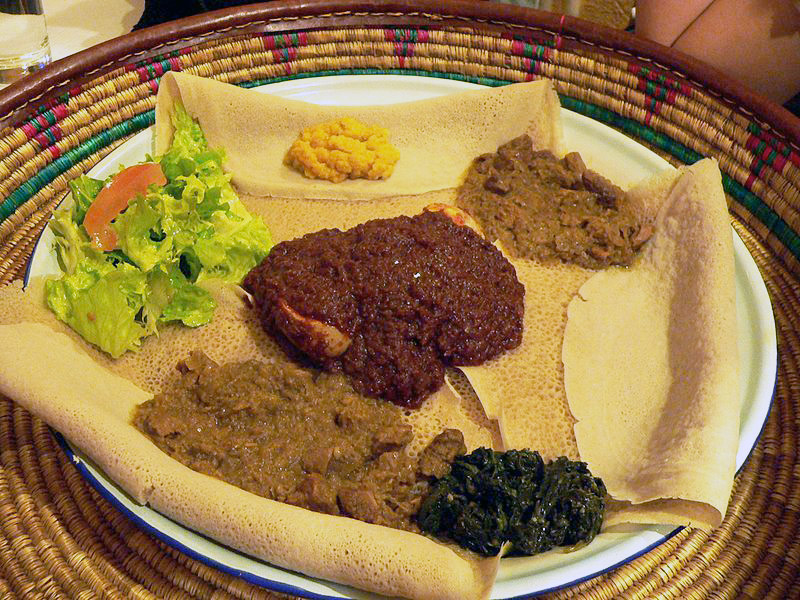Introduction: Ethiopian cuisine and its diversity
Ethiopian cuisine is known for its unique blend of spices and flavors. It is a diverse cuisine that includes both meat-based and vegetarian dishes. Ethiopian food is usually eaten with injera, a traditional flatbread made from teff flour. The cuisine also includes a variety of snacks, appetizers, and beverages that are an integral part of Ethiopian culture.
Meat-based dishes: Doro Wat, Tibs & Kitfo
Doro Wat is a popular Ethiopian chicken dish that is flavored with berbere, a traditional Ethiopian spice blend. It is usually served with injera and is a staple dish in most Ethiopian households. Tibs is another popular meat-based dish that is made with grilled or sautéed beef, lamb, or goat. Kitfo is a raw beef dish that is seasoned with spices and is usually served with injera and other side dishes.
Vegetarian options: Misir Wat, Gomen Besiga & Shiro
Ethiopian cuisine has a variety of vegetarian options that are as flavorful as the meat-based dishes. Misir Wat is a spicy red lentil stew that is seasoned with berbere. Gomen Besiga is a dish made with collard greens, carrots, and potatoes that are cooked with garlic and ginger. Shiro is another popular Ethiopian vegetarian dish that is made with ground chickpeas or lentils and is seasoned with berbere and other spices.
Injera: the traditional Ethiopian flatbread
Injera is a traditional Ethiopian flatbread that is made from teff flour, a small grain that is unique to Ethiopia. It is a sourdough bread that is used as a utensil to scoop up the different dishes in Ethiopian cuisine. It is usually served with both meat-based and vegetarian dishes.
Snacks and appetizers: Samosas and Ful
Samosas are a popular Ethiopian snack that is usually served as an appetizer. They are triangular pastries that are filled with vegetables, meat, or cheese. Ful is another popular Ethiopian snack that is made with fava beans and is usually served with injera.
Beverages: Coffee and Tej
Coffee is an integral part of Ethiopian culture and is known for its strong flavor. It is usually served after a meal and is accompanied by a traditional Ethiopian snack. Tej is a traditional Ethiopian alcoholic beverage that is made from honey and is usually served in a gourd.
Spices and flavors: Berbere, Mitmita and Nigella seeds
Berbere is a traditional Ethiopian spice blend that is used in many Ethiopian dishes. It is made from a variety of spices including chili, garlic, ginger, and coriander. Mitmita is another Ethiopian spice blend that is made from chili peppers and other spices. Nigella seeds are a common ingredient in Ethiopian cuisine and are used to flavor many dishes.
Where to try Ethiopian food: Ethiopian restaurants in the US
Ethiopian cuisine has become increasingly popular in the US over the past few years. There are many Ethiopian restaurants that offer a variety of traditional Ethiopian dishes. Some popular Ethiopian restaurants in the US include Awash Ethiopian Restaurant in New York City, Lucy Ethiopian Restaurant in Los Angeles, and Mesob Ethiopian Restaurant in Houston.

